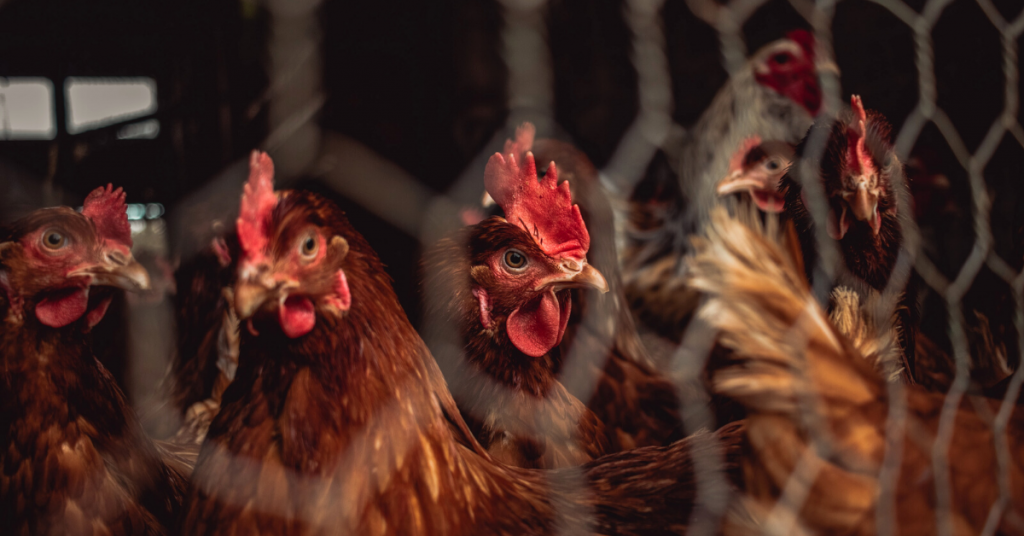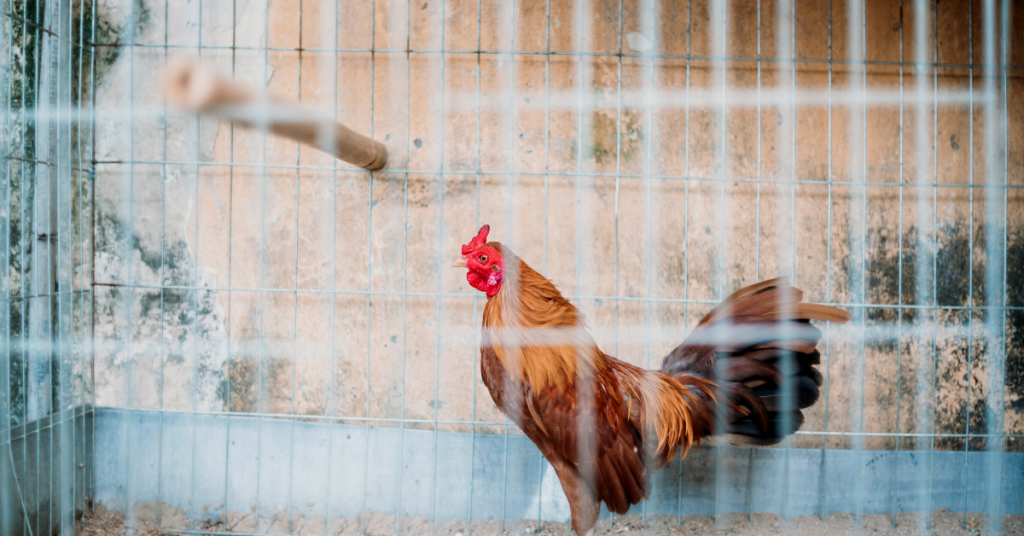Head into any grocery store and you’ll be met with a wide variety of labels on egg cartons. Because it turns out, all eggs are not created equally. While it might not be easy to tell what eggs come from what chickens based on the packaging or the outside of the egg, once the egg is cracked, the yolk will fill you in. The more orange colored the yolk, the healthier the bird it came from, and those are the kinds of eggs you want. An orange yolk represents a chicken who had excessive access to green grass and the bugs that thrive there. If the yolk is a dull yellow (like most eggs in the United States), the chicken was primarily fed a diet consisting of grains, soy, and animal products, and probably has never seen a blade of grass in its lifetime.
So from conventionally-raised to pasture-raised, and from vegetarian-fed to grain-fed, how do consumers know which eggs are best for themselves and their families based on labeling?

What are ‘conventionally-raised’ eggs?
The majority of eggs found in the United States are conventionally-raised, and if there’s one egg you shouldn’t be eating, it’s this one. Conventionally-raised eggs are the worst of the worst. These chickens are packed into tiny cages in warehouses with thousands of other chickens. Since there’s typically no air flow in these buildings, the rate in which disease and illness can spread is high, so the chickens get routine antibiotics and their eggs get washed in chlorine before distribution.
What are ‘Cage-Free’ eggs?
Eggs that are marketed as ‘cage-free’ can be viewed a little better than conventionally-raised. Cage-free chickens are allowed to roam outside of a cage. However, this doesn’t mean much when it comes to overcrowding and unsustainable farming practices. Chickens in this environment are kept inside all day and have a typical amount of space equal to 1 square foot per chicken. So while cage-free eggs come from chickens that are, in fact, cage free, these are not the best types of eggs to buy.

What are ‘free-range’ eggs?
We’re getting better now with free-range eggs! Rather than the 1 square foot per chicken for cage-free eggs, the USDA requires that free-range chickens get 2.0 square feet per chicken, and they do have “access to the outdoors.” But the keyword is access. This does not guarantee that the chicken actually goes outside. It simply means that they can go outside, but that access to the outside is typically through a few very small doors in a warehouse holding thousands of chickens. Even if the chicken does poke its head outside, grass is not guaranteed.
What are ‘vegetarian-fed’ eggs?
This is another confusing term, because chickens are naturally omnivores, so when they’re only fed vegetarian products, the eggs are going to lack key nutrients. A term like this can often lead to companies trying to market their eggs as more sustainable than they actually are. So while the word ‘vegetarian’ has a nice ring to it in the world of ‘natural’ foods, in this case – it’s not as good as you think.
What are ‘natural’ eggs?
Honestly, this word means nothing when it comes to egg labels. It actually means nothing when it comes to most other food too. Since the word ‘natural’ has no limits or terms of use when labeling food products, anything can be deemed ’natural.’ This leads to a lot of companies taking advantage of the word. When you read the word ‘natural,’ you picture an open pasture of frolicking chickens, and it can paint a nice picture in the mind of the consumer. But the term ‘natural’ is not all it’s cracked up to be, so steer clear when you can.
What are ‘organic’ eggs?
The term organic is regulated by the USDA and requires a full farm certification and a long list of rules the farmer must follow. When you see eggs labeled as ‘organic,’ you at least know exactly what you’re getting. Organic eggs come from uncaged chickens who have access to the outdoors, and based on the fact that pesticides, fertilizers, and antibiotics cannot be used, their living conditions are typically a lot better than conventional conditions.

What are ‘pasture-raised’ eggs?
In the world of eggs, pasture-raised is the best you can buy. These chickens live on a full and healthy pasture, and have a space requirement of 1000 birds per 2.5 acres which equals 108 square feet per chicken. Fixed or mobile housing is provided for chickens to go inside at night or during inclement weather. Eggs that come from pastured chickens will have the healthiest and most nutrient-dense yolk, resulting in a brilliant orange color. This is because they’re naturally consuming more omega-3 fatty acids and are also getting more Vitamin D than their caged counterparts.
Eggs might be easy to make but when it comes to choosing the right ones to buy, it gets a little more difficult.
Labels can often be misleading, and they can also be used as a marketing ploy. So we suggest going right to the source. While cage-free and free-range eggs aren’t the best when conventional farms are raising them, your local farm is probably doing a much better job and have higher standards of animal welfare.
So head to your local farm or farmers market and buy eggs from your local farmer.
Here are a few questions you can ask them to sound like an egg-spert:
- Are your chickens pastured?
- How much space are they each allotted?
- What types of feed do you supplement them with?
- Are you chickens humanely raised?
Be sure to choose restaurants, meal delivery services, and ready-to-eat foods who believe in egg health too! At mademeals, we make conscious decisions about what ingredients we use, so we choose organic and pasture-raised eggs from a local farm in Elizabeth. NJ. Because we believe our food choices can change the world, and those choices start at the source.
